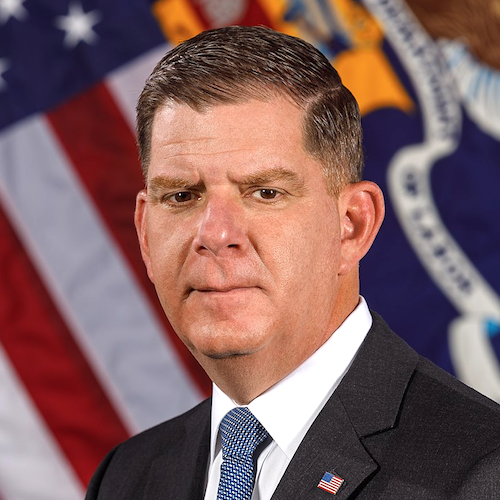

Assisted living communities and other healthcare settings will be required to conduct hazard assessments and have written plans to mitigate the spread of the coronavirus under new workplace safety rules issued by the federal government on Thursday.
The emergency temporary standard, meant to protect healthcare sector workers, was announced by the U.S. Department of Labor’s Occupational Safety and Health Administration alongside new general industry guidance that aligns with updated guidance from the Centers for Disease Control and Prevention for fully vaccinated individuals.
The standard also requires healthcare employers to provide some employees with N95 respirators and other personal protective equipment. Additionally, it includes social distancing, employee screening, and cleaning and disinfecting protocols.
Under the standard, assisted living and other employers must encourage employees to get vaccinated, as well as provide workers with paid time off to get vaccinated and to recover from any vaccine side effects.
The standard will be effective immediately upon publication in the Federal Register, although it is unclear when that will happen. A preliminary PDF is available now. Employers will need to comply with all provisions within 30 days of publication.
Throughout the pandemic, healthcare workers were — and continue to be — the source of the highest number of complaints, according to Acting Assistant Secretary of Labor for OSHA Jim Frederick.
“These are the workers who go into work day in and day out to take care of us, to save our lives,” he said. “We must make sure we do everything in our power to return the favor, to protect them while they care for us.”
Fully vaccinated workers, according to the standard, are exempt from masking, social distancing and barrier requirements when in “well-defined areas” with little to no exposure to individuals with suspected or confirmed cases of coronavirus.
“OSHA has tailored the rule that reflects the reality on the ground — the success of the vaccine efforts, plus the latest guidance for the CDC and the changing nature of the pandemic,” Labor Secretary Marty Walsh said during a media briefing on Thursday.
10.3 million employees affected
The new COVID-19 workplace safety rules will affect approximately 10.3 million employees in assisted living communities, nursing homes, home healthcare and other healthcare settings.
Senior living industry experts said they are carefully reviewing the new OSHA rules but expect that they will reflect industry practices already in place for several months.
“We believe industry operators will continue ongoing educational efforts to encourage all workers and residents to be vaccinated against COVID-19,” American Seniors Housing Association President David Schless told McKnight’s Senior Living. “It is our sense that increasing numbers of organizations in the weeks and months ahead, will be making vaccination a condition of employment in a range of settings, including seniors housing.”
Argentum Vice President John Schulte added, “Senior living takes workplace safety very seriously and has established effective protocols and stayed on top of — or even ahead of — the rapidly changing needs during the pandemic.”
Under review since late April
The standard has been under review by the Office of Management and Budget since late April after President Biden in January ordered the Labor Department to consider issuing an emergency temporary standard for businesses during the pandemic. Biden originally called for the standard to be issued by March 15.
The rules were expected to broadly apply to all workplaces, but during an Education and Labor Committee hearing on Wednesday, Walsh said the federal government was applying mandatory safety requirements only for healthcare settings.
“Science tells us that healthcare workers, particularly those who come into regular contact with the virus, are most at risk at this point in the pandemic,” Walsh said during the Thursday press call. “Following extensive review of the science and data, OSHA has determined that a healthcare-specific safety requirement will make the biggest impact.”
OSHA also delivered updated safety guidance for employers outside of healthcare, providing what Frederick called a “road map” on how to best protect unvaccinated workers in other industries. The guidance includes additional protections for workers in industries with prolonged close contact, including manufacturing, meat and seafood processing, grocery and high-volume retail.
Frederick said OSHA also issued guidance to businesses on its National Emphasis Program on COVID to increase and improve enforcement, saying “compliance efforts are making a difference.” OSHA will continue to perform inspections to hold “bad actors accountable,” he added.


